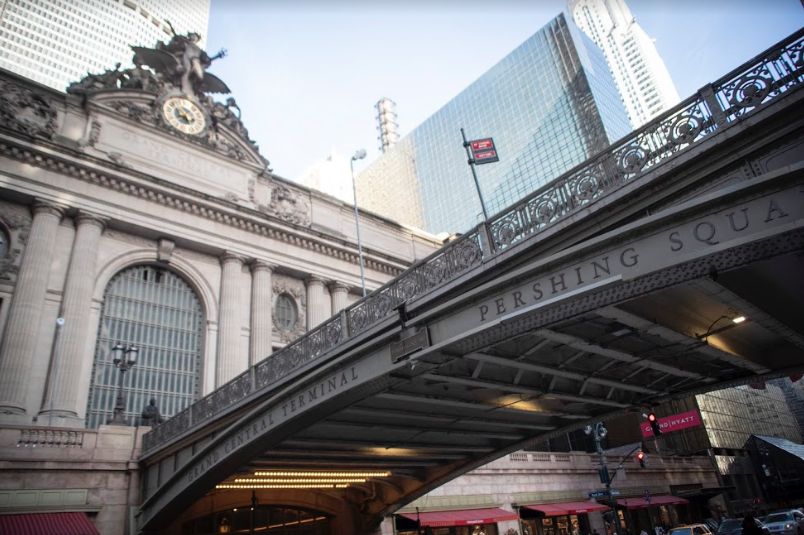Metro-North Changes Make Commuting Easier From The Bronx
ZOEY LIU/THE OBSERVER
MTA is changing its policies for commuters in the Bronx coming to Manhattan, adding more connections for the two boroughs.
March 22, 2019
On Feb. 25, MTA Metro-North Railroad President Catherine Rinaldi announced that Metro-North will open New Haven Line Trains between its Fordham and Manhattan stops. The new lines will be effective beginning April 14.
For decades, Fordham has been known as “the discharge only stop” in the Bronx. While New Haven Line trains traveling in both directions do stop at Fordham, the southbound trains only discharge passengers and northbound trains only receive passengers.
Sarah Simon, FCLC ’20, a commuter from Westchester, New York, takes the New Haven Line into Manhattan and said that “The trains stop for people to get off at the Fordham station, but the conductor almost always ends up yelling at people who boarded the train to get off and wait for the Harlem Line.”
Consequently, customers seeking to travel south into Manhattan to Grand Central or Harlem-125th Street were forced to use the Harlem Line trains.
Fordham alumna Olivia Dimou, Gabelli School of Business ’17, commutes via Metro-North from her apartment in Manhattan to the Rose Hill campus for her classes. Dimou said that “Getting back from the Bronx was a bit more difficult as I’d have to wait for the Harlem Line. I never understood why I couldn’t take that train since it literally stopped at the Fordham station.”
In a statement, Rinaldi explained that “the rule about boarding at Fordham had a long history, but that’s no reason for us to continue to uphold it.” This “exclusionary policy,” as it is often known, is a result of a 19th century deal between two private rail companies.
City Comptroller Scott Stringer said, in a correspondence with the New York Daily News, that the policy “is government-sanctioned discrimination.” He continued that “while New York City’s transit system is in crisis, the MTA and Connecticut DOT have chosen to bar communities of color from trains that connect them with their jobs, schools, and loved ones.”
Fordham station lies in a predominately black and Latin-American community. Many, along with Stringer, believe that this policy was the result of institutional racism, and aimed to make mobility for minority communities more difficult.
Rinaldi expressed that “it was long past time for this antiquated and customer-unfriendly rule to be eliminated.”
Now that the New Haven Lines will be available to customers at the Fordham stop, transportation to Manhattan will become significantly more accessible for commuters in the Bronx. The New Haven Lines will introduce an additional 96 weekday trains traveling between Fordham and Manhattan. This will more than double the existing 93 daily Harlem Line trains.
On Saturdays, 67 New Haven Line trains will now be accessible on top of the existing 83 Harlem Line trains. On Sundays, an additional 65 New Haven lines will be added to the 63 Harlem Lines.
Off-peak times are when waits are often the longest. With the addition of the New Haven Line trains, service between Fordham and Manhattan will operate four times an hour instead of only twice an hour.
“I can imagine how annoying it must be,” Simon said, “and I never understood why that rule was so heavily enforced or necessary. I think this change will make things easier for a lot of people.”
In a statement on Feb. 27, Fordham’s News and Media Bureau announced that “We are pleased that this customer-friendly change will make for more convenient travel between Rose Hill and Manhattan, and between Rose Hill and Lincoln Center, for members of the University community and guests.”
While this is an exciting development for the Fordham University community, it is also reflective of significant changes in the Fordham area of the Bronx.
In 2016, Metro-North completed a $15.1 million renewal of the Fordham station. Upgrades to the station included the rebuilding of the northbound platform to double its original capacity, a new entrance and the addition of permanent artwork. At the same time, renovations to the Fordham plaza also took place.
The New Haven Lines will make commutes into Manhattan significantly easier; the change in policy represents the evolution of New York city infrastructure.
Stringer commented that the New Haven Line stopping at Fordham is “an important first step towards addressing and reversing these discriminatory practices.”











